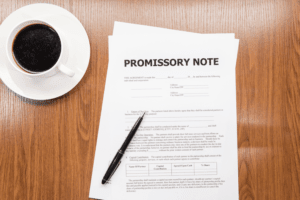Content
- Fob Shipping Point Or Fob Destination
- Fob Shipping Point Vs Fob Destination Charges
- What Is The Difference Between Fob Shipping Point And Fob Destination?
- Advantages And Disadvantages Of Fob Destination
- Significance Of Fob Shipping Point And Fob Destination
- Free On Board Fob Shipping: Meaning, Incoterms & Price In 2022
- Fob Shipping Point: Who Pays?
- Related Terms

While shipping costs are determined by when the buyer takes ownership of a particular order of goods, a company’s accounting system is also impacted. If a shipment is sent FOB Shipping Point (the seller’s warehouse), then the sale is concluded as soon as the truck pulls out of the seller’s loading dock and is noted in the accounting system as such.
Historically, FOB was used only to refer to goods transported by ship—in the U.S., the term has since been expanded to include all types of transportation. FOB Shipping Point is the terms of a sale in which legal title to the goods transfers from the seller to the buyer when those goods leave the seller’s warehouse, and as a result, the buyer pays the freight charges. Under the FOB shipping point, the seller bears the cost until the shipment reaches the supplier’s shipping dock. Once the goods are on the ship, the buyer is responsible for all the expenses, including customs, taxes, and other fees. Under FOB Destination, the seller is responsible for all costs until goods reach their destination port. There are a few key differences between the FOB shipping point and the FOB destination of goods. The following differences can be noted when a seller enters into a contract with a buyer.

It requires proper notifications for making an entry into the buyer’s inventory management system. Thus, the receipt of goods completes at the receiving dock of the buyer. Now assume that a seller quoted $975 FOB destination and the seller loaded the goods onto a common carrier on December 30.
Fob Shipping Point Or Fob Destination
It simply means that for a seller who has an overseas buyer, it is in its best interest to have the buyer be responsible for any loss or damage of the package when it gets shipped. Conversely, a buyer who is shopping from an online store with an address located out of the country would want to have an FOB destination rather than FOB shipping point.

Additionally, we will assume that the product is marked for transport on a specific date, March 5. The equipment, or product, may be in transit until it arrives at the buyer’s location, which might be scheduled for March 10. In this case, the seller would record a sale for March 5, as well as tracking the sale as an account receivable and a reduction in inventory.
Product Reviews Unbiased, expert reviews on the best software and banking products for your business. Accounting Accounting software helps manage payable and receivable accounts, general ledgers, payroll and other accounting activities. Accounting AccountEdge Pro AccountEdge Pro has all the accounting features a growing business needs, combining the reliability of a desktop application with the flexibility of a mobile app for those needing on-the-go access.
Fob Shipping Point Vs Fob Destination Charges
The buyer bears any subsequent risk inherent in the goods and he is normally liable to pay the shipment cost too. In FOB agreements, the responsibility for shipping transfer to the buyer as soon as the goods leave the seller’s location under FOB Shipping Point. Or, the responsibility can transfer to the buyer once he or she receives the goods if there is a FOB Destination agreement in place. Let’s assume that the seller had priced an item for $500 FOB destination and the goods were loaded in the delivery vehicle on the 1st Feb’19. Suppose the goods were present in that carrier for until 5th Feb’19 after which they are unloaded at the buyer’s destination point.
- We can help you mitigate risk, improve cash flow, print 3D and a host of other surprises.
- Consequently, the buyer has to state an increase in inventory and cover the costs of shipping to their facility.
- That distinction is important as it specifies who is liable for goods that have been lost or damaged during shipping.
- For example, if the seller is responsible for the transport, the buyer also loses a bit of control over timing.
In FOB Shipping Point, the ownership transfers when the shipment leaves the seller’s warehouse . Under FOB Destination, the title of the goods transfers at the buyer’s loading dock or warehouse. Or, the title of the goods transfers once the goods reach the buyer’s specified location. The seller remains the owner of the goods and is also responsible for the goods during the transit. Free on Board is a shipment term used to indicate whether the seller or the buyer is liable for goods that are damaged or destroyed during shipping.
FOB originally referred to overseas shipments by boat, but its use in the U.S. more generally applies to all forms of delivery transport, including truck, rail, and air. When buying products in bulk, do you need more control over shipping or less liability? The Blueprint covers free on board shipping options so you can make the best choice for your business.
Doing any kind of international buying or selling means choosing the best way to ship goods. If your business buys or sells overseas, you may be wondering about FOB, or “Free On Board” shipping. Conversely, when you are selling to an overseas buyer, it is in your best interest for the buyer to become responsible as soon as it leaves your charging dock.
Essentially, in FOB shipping point, the buyer will foot the bill for transport costs from seller to himself. Since the shipment is FOB shipping point, the delivery is made at the moment the flowers are shipped.
The latest publication of Incoterms, Incoterms 2020, is available for purchase on the International Chamber of Commerce website. Caroline Banton has 6+ years of experience as a freelance writer of business and finance articles. The offers that appear in this table are from partnerships from which Investopedia receives compensation. Investopedia does not include all offers available in the marketplace.
What Is The Difference Between Fob Shipping Point And Fob Destination?
Companies can also incur costs when placing an inventory order through the price of hiring labor to unload the goods as well as the cost of leasing a warehouse to store the goods. A company can lower its inventory costs by ordering greater quantities and reducing the number of individual shipments it brings in.
Or, if you’re paying in the local currency where you’re buying from, you may find you could save up to 8x by sending through Wise rather than your bank or even PayPal. Here’s what you might expect to pay when buying goods with a FOB agreement. The Management Dictionary covers over 2000 business concepts from 5 categories.
Advantages And Disadvantages Of Fob Destination
Freight Collect and Allowed where buyer pays the freight charges after he received the goods but he deducts the cost from the supplier’s invoice. That also means that if a pallet of jewelry is lost or damaged in shipment, the buyer must file any claims for compensation – not the seller – since the purchase became the buyer’s responsibility directly. Freight charges while the buyer still pays for customs and other fees when the goods arrive at the port of destination. The difference between shipping point and destination is at what point does the seller transfer ownership of the shipment to the buyer.
Freight Prepaid and Added – Seller pays freight charges and then bills them to buyer. Freight Prepaid and Allowed – Seller pays and bears freight charges.
Significance Of Fob Shipping Point And Fob Destination
Also assume that the goods are on the truck until January 2, when they are unloaded at the buyer’s location. Therefore, the seller should continue to report these goods in its inventory until January 2. The seller will be responsible for the shipping costs, which will be an expense in January when the sale is reported. If the seller of goods quotes a price that is FOB shipping point, the sale takes place when the seller puts the goods on a common carrier at the seller’s dock. Therefore, when the goods are being transported to the buyer, they are owned by the buyer and the buyer is responsible for the shipping costs. In this case, the seller can either reimburse the European company for the cost of the equipment, or the seller can reship the items.
- The seller will be responsible for the shipping costs, which will be an expense in January when the sale is reported.
- In this case, both seller and buyer record the transaction in their accounts on December 30.
- Assume the computers were never delivered to Company XYZ’s destination, for whatever reason.
- That’s why our editorial opinions and reviews are ours alone and aren’t inspired, endorsed, or sponsored by an advertiser.
FOB shipping point means you choose your delivery method, which can lower costs, or you can avoid liability, even though you’ll likely pay more, with FOB destination. The point at which the goods’ ownership transfers and related shipping costs also affect your cost of goods sold . Otherwise, if a shipment is damaged or lost in transit, contentious, and expensive, legal wrangling could ensue to determine financial responsibility. In this example, we will assume that the seller, True Fit Fitness, has quoted a price of $525.75 for the sale of exercise equipment, effective as the FOB shipping point.
Free On Board Fob Shipping: Meaning, Incoterms & Price In 2022
This means that your shipment is in the proverbial hands of the supplier through the process of transporting them to a port and loading them aboard a ship. Assume that a seller quoted a price of $900 FOB shipping point and the seller loaded the goods onto a common carrier on December 30. Also assume that the goods are in transit until they arrive at the buyer’s location on January 2.
Ex Works Exw Vs Free On Board Fob: What’s The Difference?
On the other hand, another International commercial term used in the shipping process is the FOB shipping destination. The distinction of Free on board destination or FOB destination from FOB shipping point is that the seller remains liable for any loss or damage of the package until it gets delivered to the buyer. The buyer marks it an increase in stock once the package is delivered in good condition and gets to the warehouse. FOB shipping point transfers the title of the shipment when the goods are placed at the shipping point. This is usually the seller’s loading dock, delivery truck, or postage office.
Company A can file an insurance claim because the company takes ownership of the package the moment it gets shipped. Because the FOB shipping point agreement transfers the title of the shipment of products when they are placed in the shipping point, the legal title of the products is transferred to the buyer which is Company A. FOB Shipping Point means that the seller transfers ownership of the goods sold at the point of origin, when the items leave the seller’s warehouse. Under FOB Shipping Point, the seller would record the sale as soon as the goods leave the seller’s premises. The buyer then owns the products as soon as they leave the warehouse and therefore must pay any delivery and customs fees. FOB is one of those seemingly complex transportation terms that are known as shipping terms of sale.
The next three steps of the process are carried out at the supplier’s expense. As such, FOB shipping means that the supplier retains ownership and responsibility for the goods until they are loaded ‘on board’ a shipping vessel. Under the FOB shipping point the buyer pays the shipping cost from the factory and becomes responsible for the goods in case of any damages during the shipment. The FOB shipping point is an important term to understand in a contract, as it can significantly affect how much you pay for packing materials and insurance. Destination agreement, the seller retains ownership of the goods up until the point where the goods have reached their final destination.
One more difference between the FOB shipping point and FOB destination lies in the costs of transport. In a FOB shipping point contract, the buyer is responsible for additional costs of shipment, as they are legally considered to be in full ownership of the product as it is picked up by the carrier. Conversely, with a FOB destination, the seller assumes full shipping costs as well as any additional insurance or liability costs throughout transport of the product, up until it reaches the buyer’s destination. Generally the seller incurs all the shipping costs in FOB destination arrangements and will be held responsible for the replacement of the damaged goods. The overall transportation costs, risk are beard by the seller for which FOB destination appear in the balance sheet of the seller not the buyer. Let us assume, Company A that is located in the Philippines buys Personal Protective Equipment from a supplier based in Taiwan, and the company signs an FOB shipping point agreement. If the assigned carrier damages the package during delivery, Company A assumes full responsibility and cannot demand reimbursement or replacement from the supplier.
With a https://www.bookstime.com/ sale, the buyer assumes all responsibility and legal liability for the goods purchased. This means that the buyer is responsible for recording the sale at the point of transport within their accounts payable, meaning that an increase in their inventory has taken place. Conversely, the seller records the point of sale at the time of shipment and records the sale within their accounts receivable, as an added payment, whether the payment has been made or is waiting to be made. With FOB destination, the title of ownership may not be transferred to the buyer until the goods reach the buyer’s destination, either on a loading dock, post office box, home or office building. With a CIF agreement, the seller pays costs and assumes liability until the goods reach the port of destination chosen by the buyer. If the terms include the phrase “FOB origin, freight collect,” the buyer bears the responsibility of the goods being shipped and is responsible for freight charges. If the terms include “FOB origin, freight prepaid,” the buyer of goods assumes the responsibility of goods at the point of origin, and the seller pays the cost of shipping.
The transportation department of a buyer might insist on FOB shipping point terms, so that it can take complete control over the delivery of goods once they leave a supplier’s shipping dock. In FOB destination, the seller would pay for, and be liable for, transportation from herself to the buyer’s unloading dock. FOB Destination means that the ownership of the products transfer from the seller to the buyer only when the goods arrive at the buyer’s location, in good condition. FOB Destination is more beneficial to the buyer, whereas FOB Shipping Point benefits the seller. For example, if a company was shipping its goods to New York City, it would be written out as FOB New York.



















